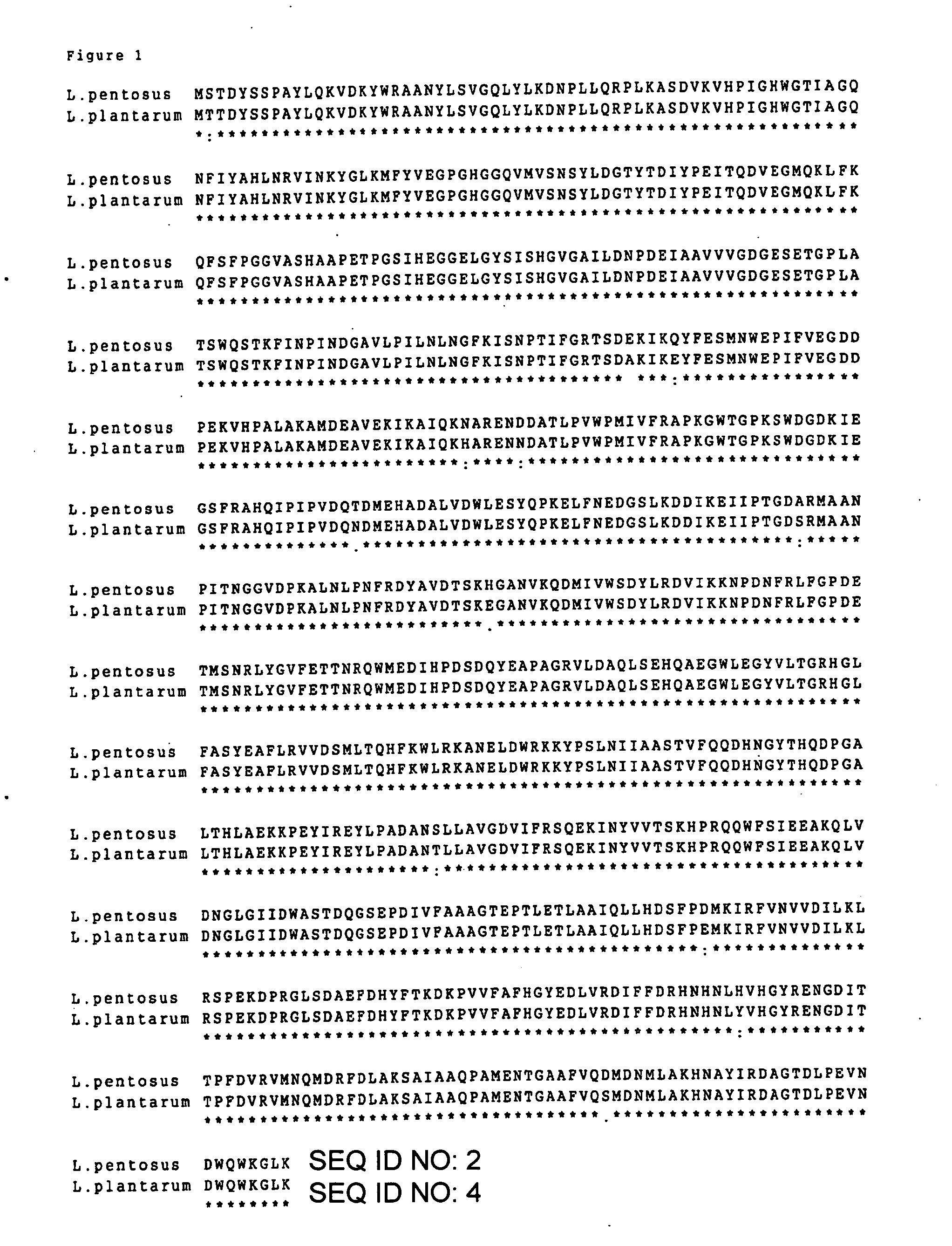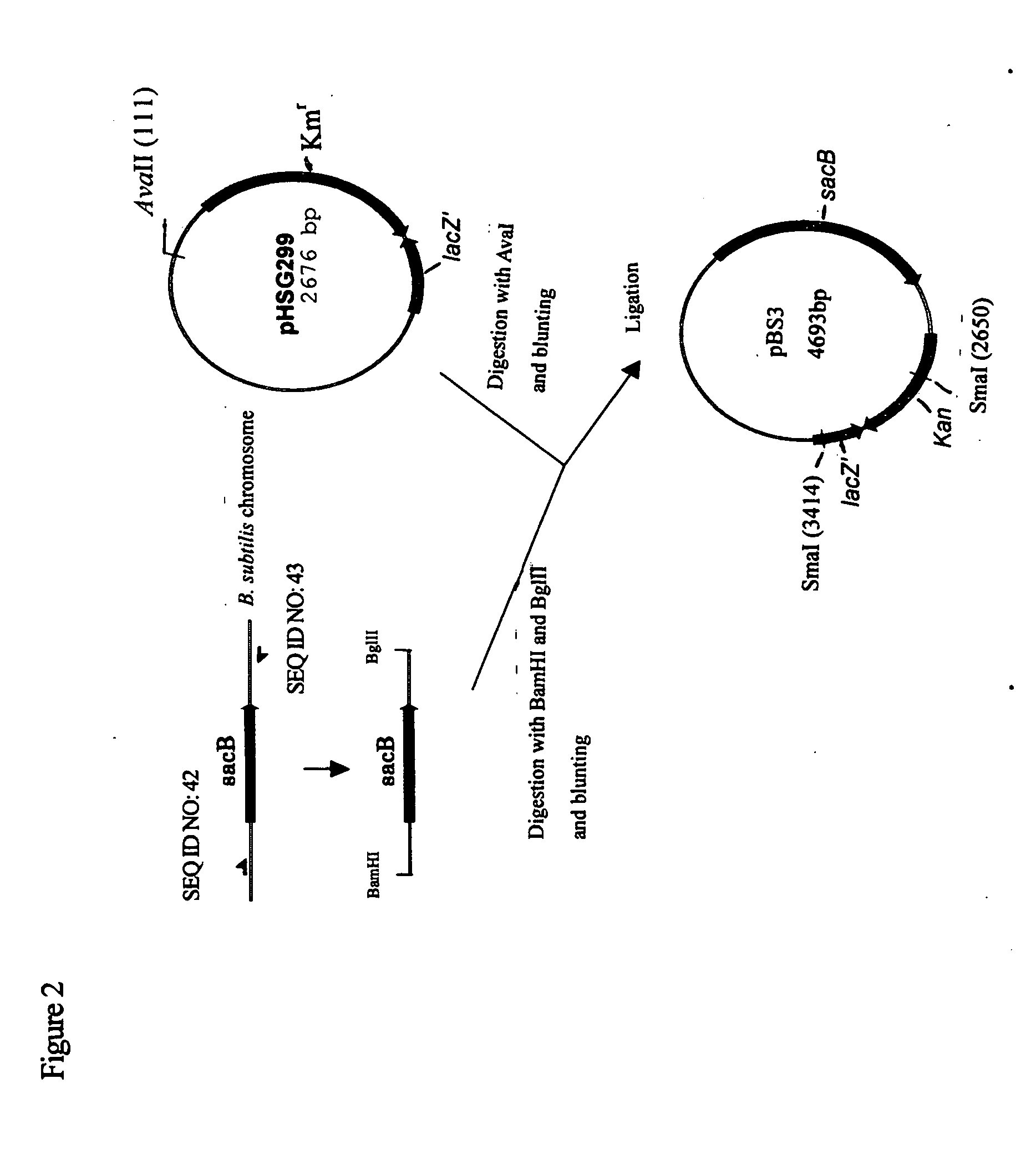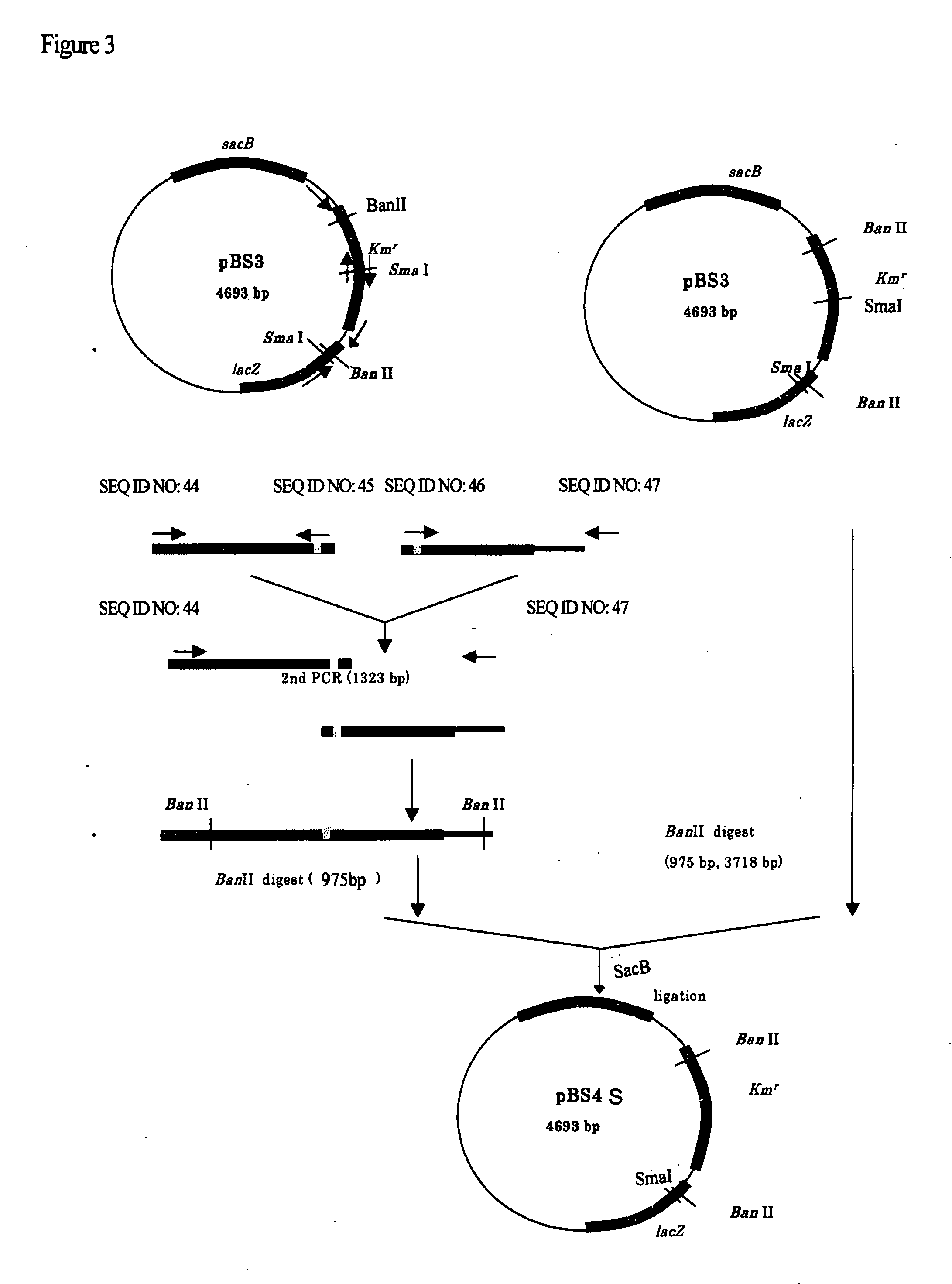Use of phosphoketolase for producing useful metabolites
- Summary
- Abstract
- Description
- Claims
- Application Information
AI Technical Summary
Benefits of technology
Problems solved by technology
Method used
Image
Examples
example 1
Calculation of Acetyl-CoA Formation by Bacterium With or Without Phosphoketolases Activities
[0189] 1. Reactions of Acetyl-CoA Biosynthetic Pathway Which Does Not Involve Phosphoketolases Activities.
[0190] PTS system followed by glycolysis gives the following equation:
Glucose=PEP+Pyr+ATP+2 NADH
[0191] Phosphoenolpyruvate carboxylase encoded by ppc gene catalyzes the following reaction:
PEP+CO2=oxaloacetate
[0192] Pyruvate dehydrogenase encoded by pdh gene catalyzes the following reaction:
Pyr=acetyl-CoA+CO2+NADH
[0193] And final equation is:
Glucose=acetyl-CoA+oxaloacetate+ATP+3 NADH (A)
[0194] 2. Reactions of acetyl-CoA biosynthetic pathway which involves phosphoketolases activities.
[0195] PTS system followed by glycolysis gives the following equation:
Glucose+PEP=fructose-6-phosphate+Pyr
[0196] Phosphoenolpyruvate synthase catalyzes the following reaction:
Pyr+ATP=PEP
[0197] Phosphoenolpyruvate carboxylase coded by ppc gene catalyzes the following reaction:
PEP+CO2=oxaloaceta...
example 2
Calculation of Theoretical Yield of L-Glutamic Acid Production Using Bacterium with or without Phosphoketolases Activities
[0205] 1. Reactions of L-Glutamic Acid Biosynthetic Pathway Which Involves PTS, Glycolysis, and the TCA Cycle.
[0206] PTS+glycolysis:
glucose=acetyl-CoA+oxaloacetate+ATP+3NADH (A)
[0207] TCA cycle:
acetyl-CoA+oxaloacetate=2-oxoglutarate+NADPH+CO2
[0208] Glutamate dehydrogenase:
2-oxoglutarate+NH3+NADPH=glutamic acid
[0209] Final equation:
glucose=glutamic acid+ATP+3 NADH+CO2 (C)
[0210] Theoretical weight yield of L-glutamic acid is 81.7%
[0211] 2. Reactions of L-glutamic acid biosynthetic pathway which involves glycolysis, non-oxidative PPC, and D-xylulose-5-phosphate phosphoketolase only
[0212] Glycolysis and non oxidative PPC:
5 glucose+5 PEP=5 fructose-6-phosphate+5 Pyr, where
fructose-6-phosphate+ATP=2 GA-3P
2 fructose-6-phosphate+2 GA-3P=2 xylulose-5-phosphate+2 erythrose-4-phosphate
2 fructose-6-phosphate+2 erythrose-4-phosphate=4 xylulose-5-phosphate ...
example 3
Calculation of Theoretical Yield of Succinate Production Using a Bacterium with or without Phosphoketolases Activities
[0244] 1. Reactions of Succinate Biosynthetic Pathway Which Involves PTS, Glycolysis, and the TCA Cycle.
[0245] PTS+glycolysis:
glucose=PEP+PYR+ATP+2 NADH
[0246] Phosphoenolpyruvate carboxylase:
PEP+CO2=oxaloacetate
[0247] Pyruvate dehydrogenase:
PYR=acetyl-CoA+CO2+NADH
[0248] Summary equation:
Glucose=oxaloacetate+acetyl-CoA+ATP+3 NADH
[0249] TCA cycle:
Oxaloacetate+acetyl-CoA=succinate+NADPH+NADH+ATP+2 CO2
[0250] Final equation:
Glucose=succinate+NADPH+4 NADH+2 ATP+2 CO2
or presuming that NADH=NADPH=2 ATP
Glucose=succinate+12 ATP+2 CO2 (F)
Theoretical weight yield of succinate is 65%.
[0251] 2. Reactions of succinate biosynthetic pathway which involve glycolysis, non-oxidative PPC, and D-xylulose-5-phosphate phosphoketolase only
[0252] Glycolysis, non oxidative PPC, D-xylulose-5-phosphate phosphoketolase, phosphate acetyltransferase and phosphoenolpyruvate carb...
PUM
 Login to View More
Login to View More Abstract
Description
Claims
Application Information
 Login to View More
Login to View More - Generate Ideas
- Intellectual Property
- Life Sciences
- Materials
- Tech Scout
- Unparalleled Data Quality
- Higher Quality Content
- 60% Fewer Hallucinations
Browse by: Latest US Patents, China's latest patents, Technical Efficacy Thesaurus, Application Domain, Technology Topic, Popular Technical Reports.
© 2025 PatSnap. All rights reserved.Legal|Privacy policy|Modern Slavery Act Transparency Statement|Sitemap|About US| Contact US: help@patsnap.com



